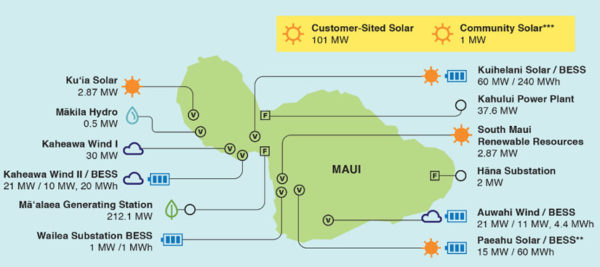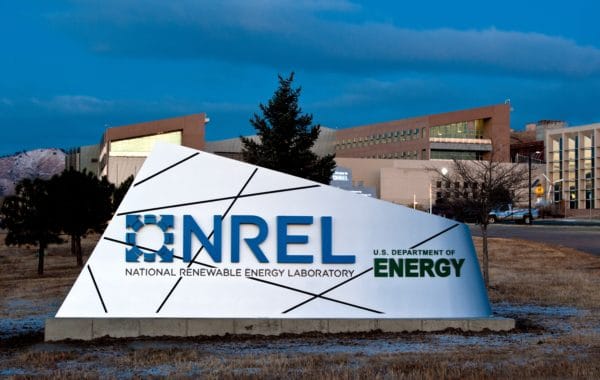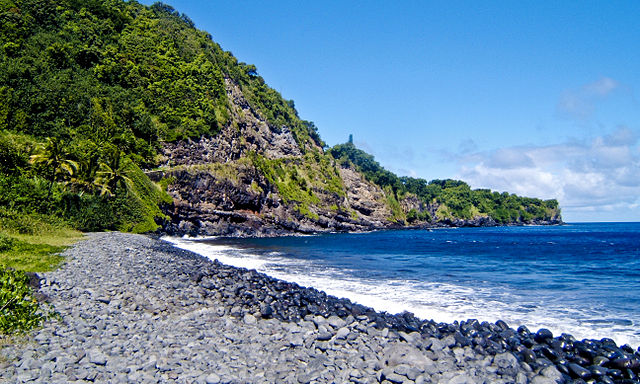Maui has dashed ahead of Hawaii’s 2045 clean energy mandate and by 2024 may become among the first 100% renewables-powered interconnected electric transmission systems anywhere in the world .
The island has a pipeline of 175 MW of new solar-storage hybrid power plants over the next three years, adding to the almost 200 MW of solar and wind presently on the grid. This is expected to be enough power to supply Maui’s roughly 70,000 customers without using conventional generation for many hours of the year.
The Energy Department’s National Renewable Energy Laboratory said it is developing and validating multi-timescale tools that are expected to help bring Maui closer to its clean energy goals.
The MIDAS touch
Solar and wind add their fair share of uncertainty to the grid. Grid operators face the challenge of scheduling power or grid stability services under uncertain conditions. And, because these conditions are so new, few models exist for operators to look to for guidance.
NREL is using its MIDAS–the Multi-Timescale Integrated Dynamic and Scheduling model–to help grid operators manage high-renewable systems, providing operational intelligence and advance system analysis.
MIDAS could enrich existing operational tools for managing energy markets and conducting reliability analysis down to the fast time-scale dynamics, said NREL. The tool bridges gaps between economic analysis and dynamic reliability evaluations of grid operation, so that trade-offs in dispatching renewable and nonrenewable assets for grid services are known.

Image: NREL
For example, MIDAS has helped Maui model operations under future low grid inertia. The model has identified potential reliability issues, from resource adequacy and energy balance to frequency dynamics and electromagnetic transient timescales.
Inverter-based resources like wind, solar, and battery storage can provide a range of grid ancillary services by programing the controls, said Jin Tan, principal investigator of several NREL projects aimed at enabling 100% renewable grid operations.
One problem, however, is that system operators largely do not use the tools. As a result, system operators need to incentivize renewables to provide grid services by developing new market rules. To do that, they need modern tools to validate the performance of renewable systems, or to manage risk—economic and operational—associated with scheduling variable resources like solar and wind, Tan said.
Sub-second timescale modeling
Inverter based resources (IBRs) such as solar and wind are beginning to make an impact on low-inertia grids, NREL said. While conventional power systems have historically used spinning generators to smooth sub-second electromagnetic disturbances, IBRs are replacing those resources. As a result, related systems need a new supply of grid stability.
 NREL simulated Maui’s entire future transmission system, modeling hundreds of lines, buses, transformers, solar, storage, and wind, along with and their inverter controls at a sub-second scale.
NREL simulated Maui’s entire future transmission system, modeling hundreds of lines, buses, transformers, solar, storage, and wind, along with and their inverter controls at a sub-second scale.
They found that as Maui approaches 100% renewables, several options are available for ensuring grid stability. Under simulation, using synchronous condensers to stabilize, or even by programming grid-forming controls on a relatively small number of inverters makes it possible to stabilize a completely renewable powered system.
A final test
Maui’s renewable operation is supported in part by the DOE’s Solar Energy Technologies Office (SETO), which awarded an NREL-led project called “SAPPHIRE” to develop hybrid renewable plant controls. The $3.6 million project bridges the research of SETO and NREL by unifying stabilizing controls with the MIDAS operational framework.
NREL will first use the ARIES (Advanced Research on Integrated Energy Systems) platform to develop and de-risk the plant controls at real power. ARIES creates a replica grid environment for Maui to validate its newly interconnected renewables and evaluate real-time inertia and stability.
The project will be capped off by a 60 MW demonstration on Maui’s system, and will act as a proof of 100% renewables remaining possible. This model can serve as a guiding force for high-renewables grids anywhere, said NREL.
This content is protected by copyright and may not be reused. If you want to cooperate with us and would like to reuse some of our content, please contact: editors@pv-magazine.com.









By submitting this form you agree to pv magazine using your data for the purposes of publishing your comment.
Your personal data will only be disclosed or otherwise transmitted to third parties for the purposes of spam filtering or if this is necessary for technical maintenance of the website. Any other transfer to third parties will not take place unless this is justified on the basis of applicable data protection regulations or if pv magazine is legally obliged to do so.
You may revoke this consent at any time with effect for the future, in which case your personal data will be deleted immediately. Otherwise, your data will be deleted if pv magazine has processed your request or the purpose of data storage is fulfilled.
Further information on data privacy can be found in our Data Protection Policy.